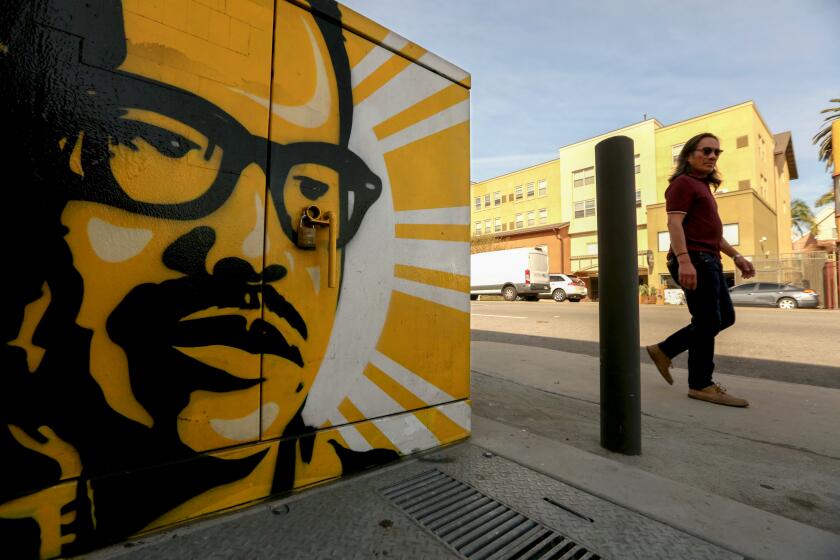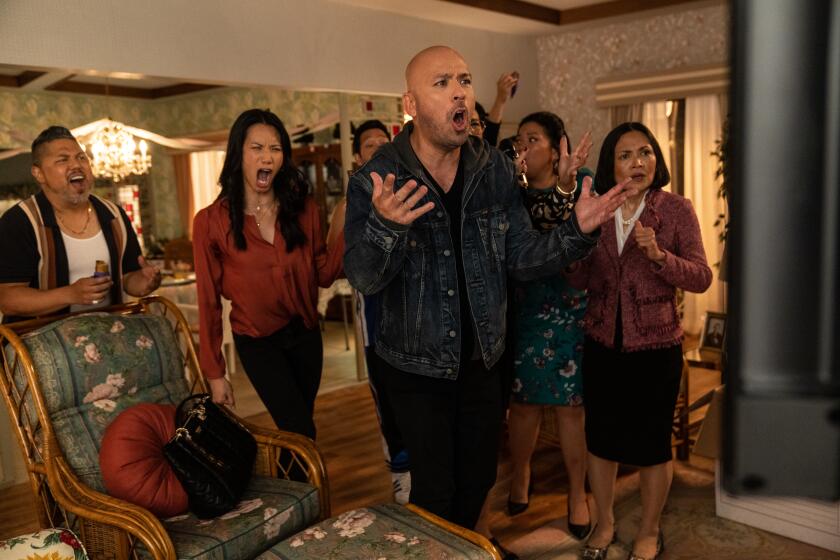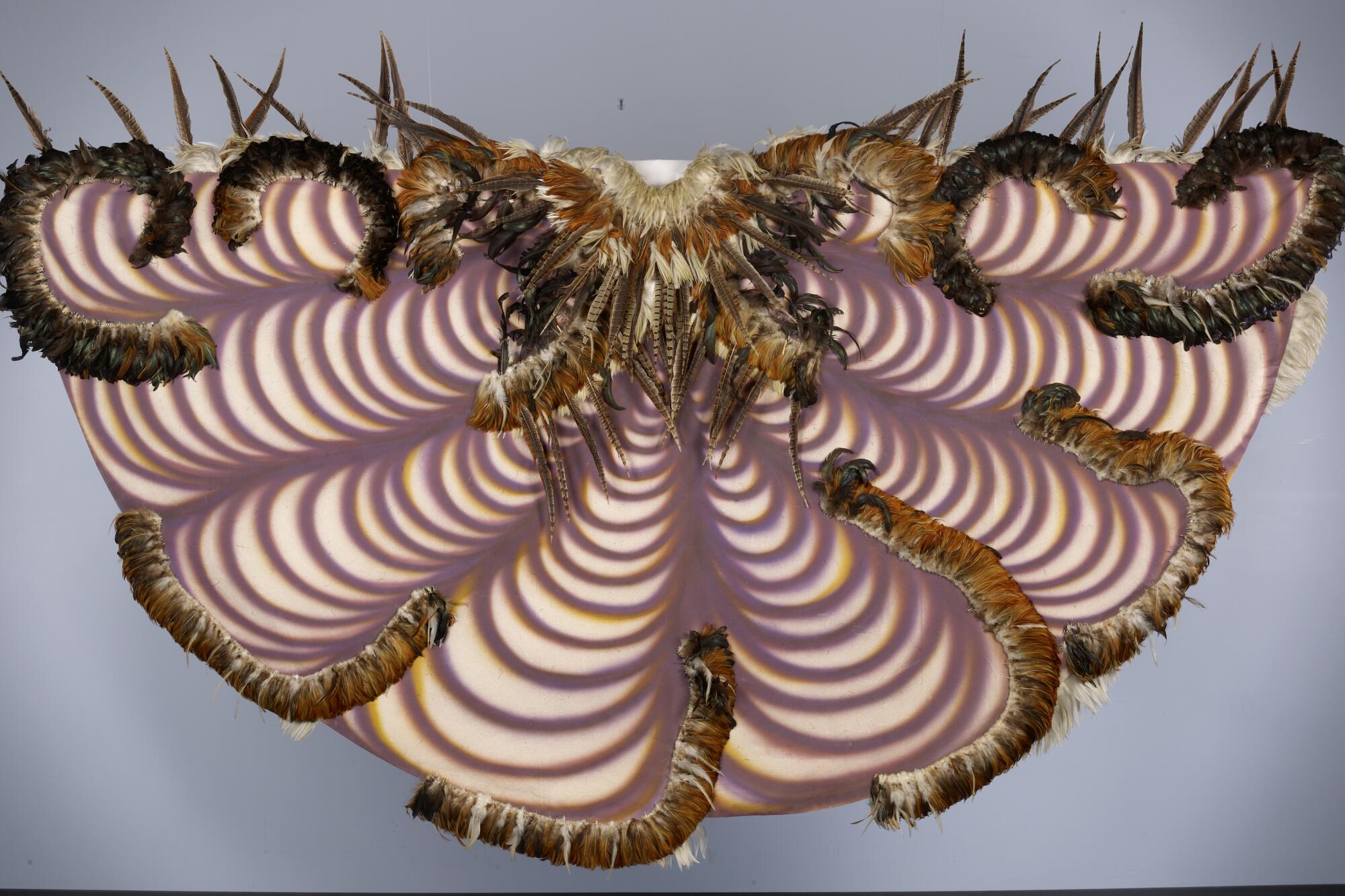
SAN FRANCISCO — Carlos Villa died in 2013, but palpable traces of his presence remain.
There is a black-and-white photograph of his arm, taken some time around 1973, an image whose surface bears a series of feathers that mark the outline of his extended limb — as if this were not the limb of a human, but of some enchanted avian man-monster.
There is the otherworldly mold of his face, dating to 1979, a delicate life mask crafted out of white paper pulp that is embedded with hair, feathers and chicken bones — bones whose surfaces have been dressed in bright, woven thread.
There are his majestic cloaks, each cut to the dimensions of his body, made of canvas trimmed with feathers, their surfaces decorated with repeating forms, such as radiating arcs or the outline of his open palm.
To enter a gallery of Villa’s objects is to come into contact with an almost supernatural presence — as if, at any moment, these artifacts of imagined rituals might come vibrating back to life. Villa may be gone but his spirit is very much alive.
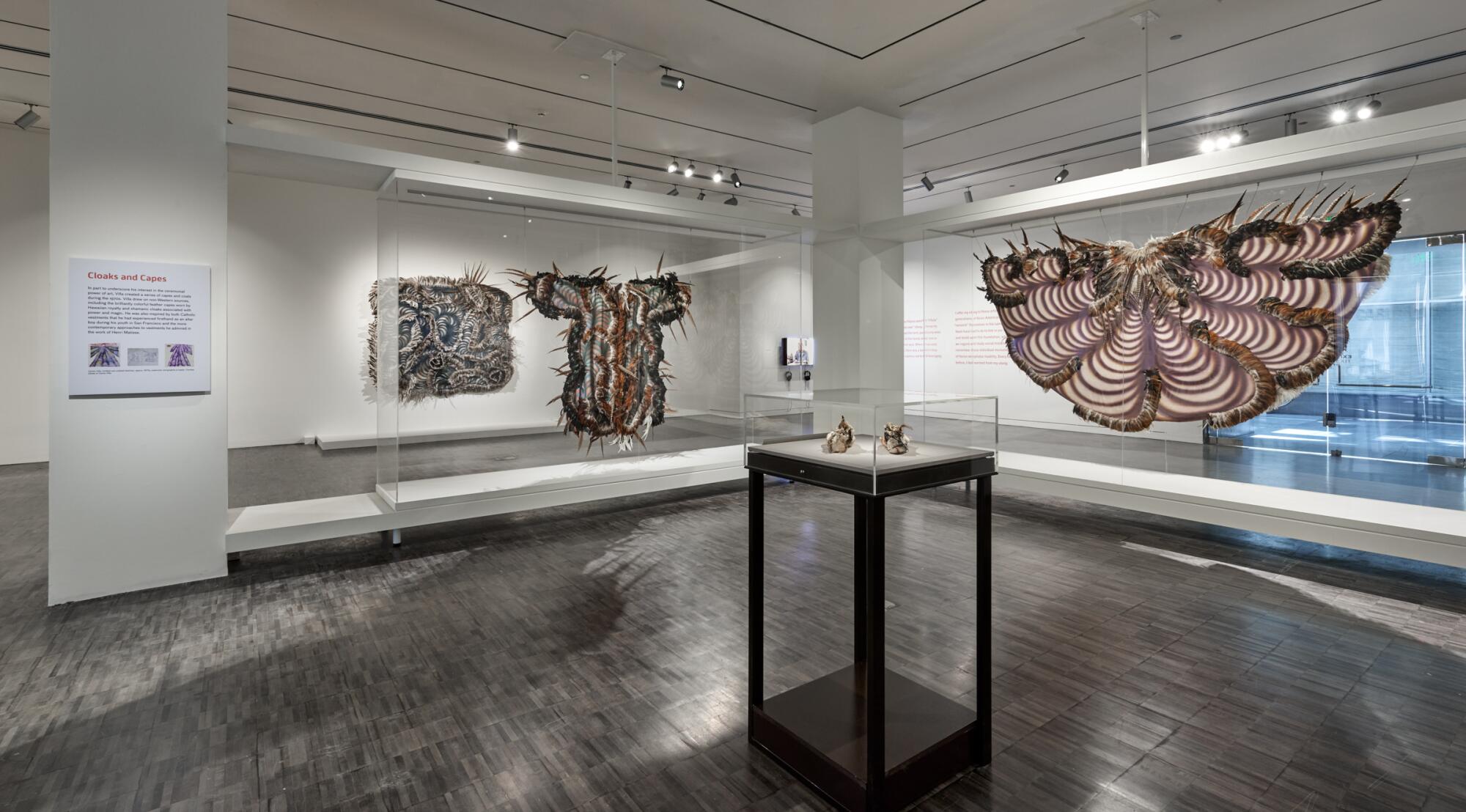
Villa, a San Francisco artist who for decades shaped generations of artists as a professor at the San Francisco Art Institute, is now the subject of a posthumous, two-part retrospective that draws belated attention to his work. “Carlos Villa: Worlds in Collision,” on view at that city’s Asian Art Museum through October, and “Carlos Villa: Roots and Reinvention,” which has its final day at the San Francisco Art Commission on Saturday, go a long way toward resurfacing the work of a key figure whose magnetic work drew heavily from non-Western traditions and the Filipino experience in the United States.
Together, they make for an electric viewing experience — not just for the charged, almost shamanic nature of his work, but for the story it tells about those whose histories remain on the margins.
Villa was born in San Francisco in 1936, the son of Filipino immigrants from the Ilocos region who landed in the Bay Area in the 1920s. The Villa family settled in the Tenderloin, where his father, Pedro Corpus Villa, worked as a custodian. His mother, Prisca Gorospe, was a housekeeper.

The new arch will mark the eastern entrance to L.A.’s Historic Filipinotown, much as the twin-dragon gate over Broadway welcomes visitors to Chinatown.
The artist’s early years were shaped by a period of bristling anti-Asian sentiment. In 1930, white mobs took over the streets of Watsonville in a five-day riot, attacking Filipino workers and establishments and killing at least one man — sparking more anti-Filipino violence in other cities including San Francisco. This was followed by anti-Japanese sentiment fueled by World War II. In an interview in the ‘80s, Villa described how his “folks were really frightened because we looked Japanese.”
Villa also faced the legacy of anti-immigrant legislation that had targeted Asians — and Filipinos in unique ways — since the previous century. After the U.S. annexed the Philippines in 1898 during the Spanish American war, Filipinos were considered U.S. nationals but not allowed to hold full citizenship, acquire land, vote or marry white women.
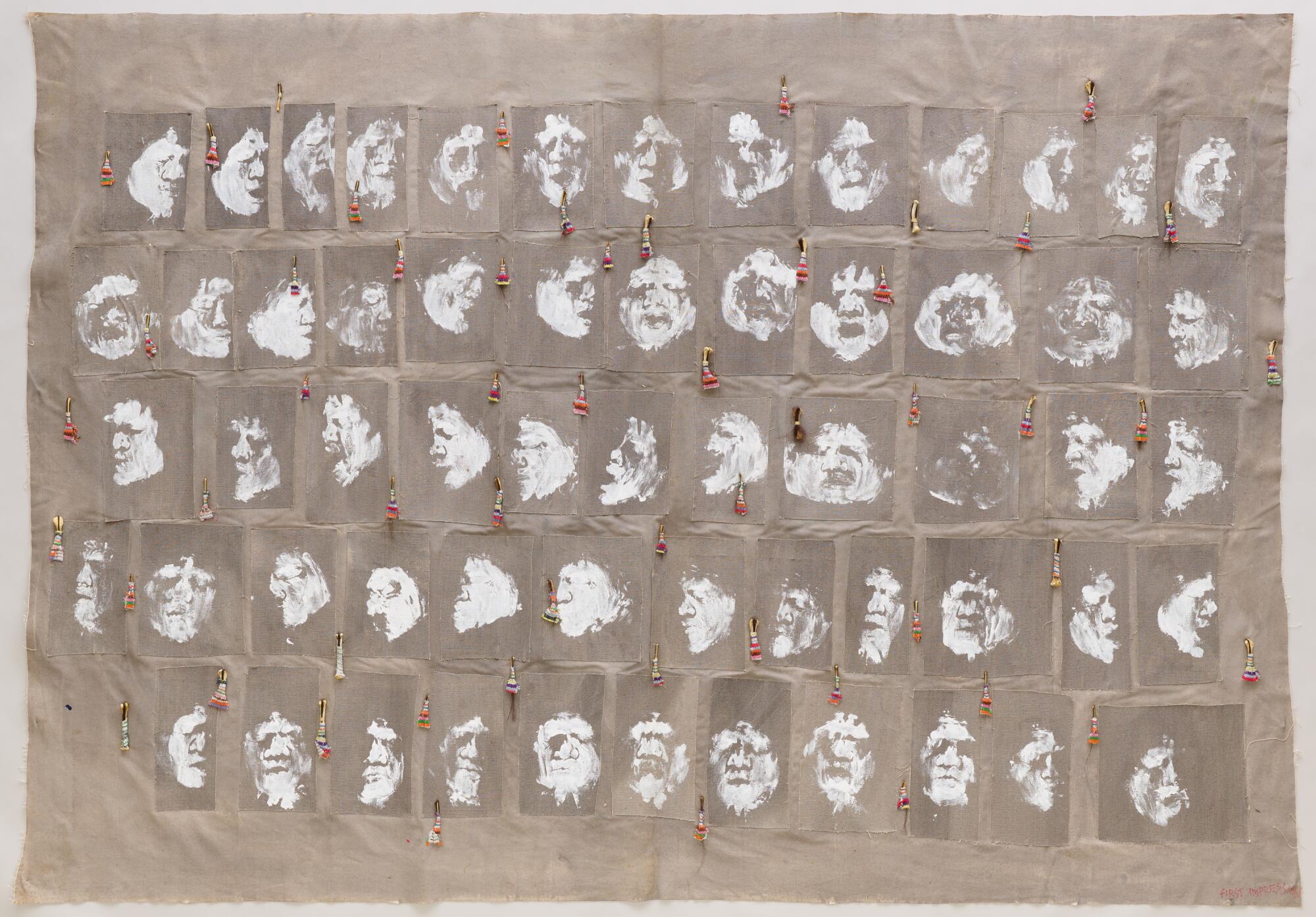
Moreover, strict quotas limited the number of immigrants — women in particular, as a way of preventing Filipino laborers from establishing fixed communities in the United States. This bachelor generation, referred to as “manong” (an Ilocano word describing elders), retained a collective presence into the 1970s in San Francisco. One SRO residence, the International Hotel, was inhabited principally by elderly Filipino men until the building was shuttered during a wave of urban renewal in the ‘70s.
These “uncles,” as Villa described them, materialize in his later work: sculptural doorways, some draped in black feathers, others featuring the fedoras favored by nattily dressed Filipino men heading off for a night on the town. On view at the San Francisco Arts Commission, these are remarkable for their striking, spectral aesthetics and the pernicious histories they represent — harkening to a time when businesses around California bore signs that read, “Positively no Filipinos allowed.”
The doorways powerfully evoke the states inhabited by manong — “nationals” who were neither foreigners nor citizens. Men held in an in-between state, forever standing at the door.
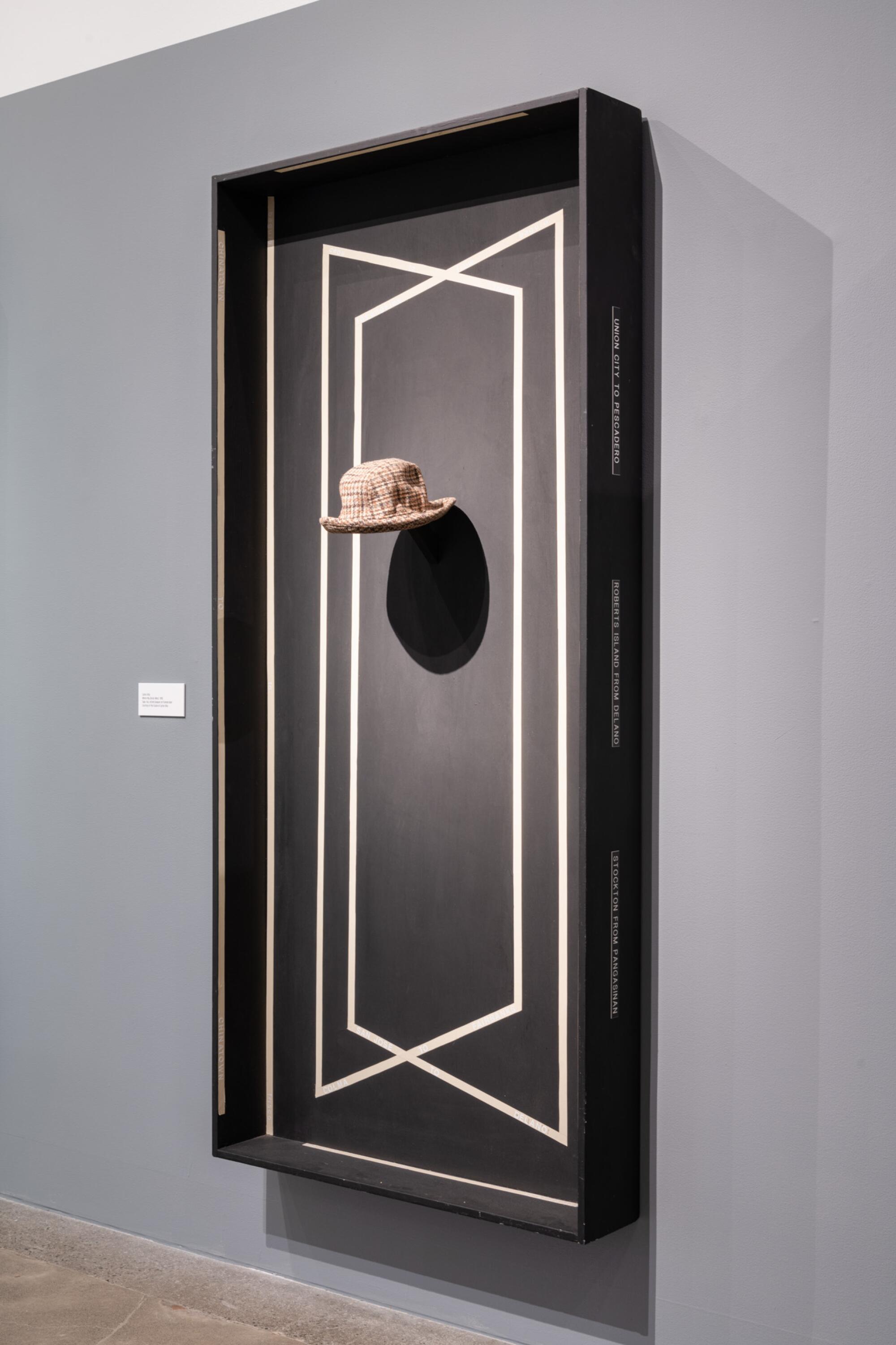
Representation matters in Hollywood. Too often, on the way to selling stories with universal themes, we lose the specifics.
Motivated by his cousin Leo Valledor, who was a painter in the late 1950s, Villa studied at the California School of Fine Arts (which later became the San Francisco Art Institute) under important Bay Area painters such as Elmer Bischoff, Richard Diebenkorn and Walter Kuhlman. Among his friends, Villa counted the artists Manuel Neri and Bernice Bing.
Drawn to abstraction, Villa had a fair amount of success early on. His paintings were exhibited in San Francisco galleries and in the group show “The Art of San Francisco,” held at the San Francisco Museum of Modern Art in 1960. For a time, the artist moved to New York City (following Valledor, who had relocated there first), and his works — sculptural paintings which extended into three dimensions and often took unusual forms — began to materialize in Manhattan galleries.
But there was an element of that work that didn’t satisfy his artistic urges — nor the questions raised by his Filipino ancestry. “Sitting down at a table and talking to Don Judd or Dan Flavin, or what kind of light bulbs Dan used on his pieces at Max’s Kansas City ... what did it add up to?” he said in an interview with art writer Paul Karlstrom in 1995. “I just started realizing that my art was going further and further away from me and becoming more and more something else. I had no attachment to it.”
In 1969, Villa moved back to San Francisco and completely transformed the way he approached art.
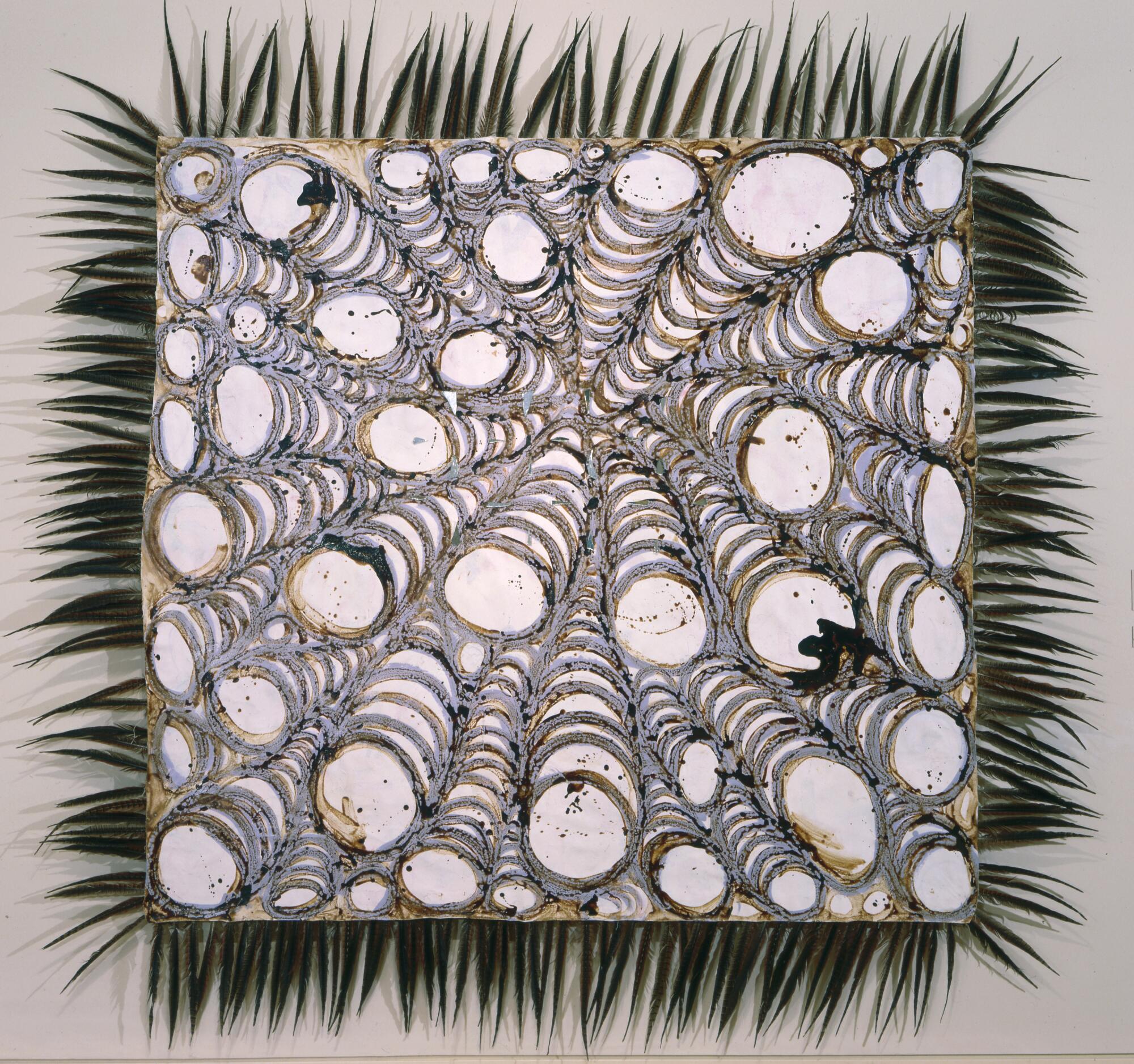
Inspired by the Third World liberation movements of the 1960s, as well as art-making traditions such as Chicano “rasquachismo” (the practice of transforming discarded or devalued materials), Villa began to imagine what art by a Filipino American artist might look like. This did not mean manufacturing copies of Indigenous Filipino basketry or resuscitating Filipino colonial painting, but instead diving deeply into an array of non-Western art — be it Dogon sculpture from Mali or tattooing traditions from Polynesia — and synthesizing them in ways that spoke to his experiences.
Assisting him were figures such as curator Thomas Seligman, who in 1971 had been hired by the Fine Arts Museums of San Francisco to establish a department devoted to Africa, Oceania and the Americas — and who gave Villa remarkable access to the museums’ growing collection in these areas.
Villa took that knowledge and ran with it: as a teacher at the San Francisco Art Institute (he joined the faculty in 1969) and as an organizer. The branch of the show at the Asian American Museum, as well as the exhibition’s remarkable catalog, take their title — “Worlds in Collision” — from a multicultural curriculum and symposia that Villa began to develop in the ’90s.
Villa also enthusiastically embraced performance, staging rituals that employed some of the objects now on view. While work from this period — largely, the ‘70s and ‘80s — appears in both shows, the most remarkable of these are in a single ground-floor gallery at the Asian Art Museum: Villa’s feathered paintings with their visceral whorls of color, the magnificent capes, the molds of his body, a canvas bearing the repeated imprint of his face in white paint. They are objects that speak to his roots but bear his bodily presence so intensely that they seem to speak out against Filipino American erasure.
As the story goes, when he was in school Villa asked one of his professors, “Was there any Filipino art history?” The response: “Nope, I don’t think there is.”
Villa’s work offers a remarkable rejoinder to that blinkered response.
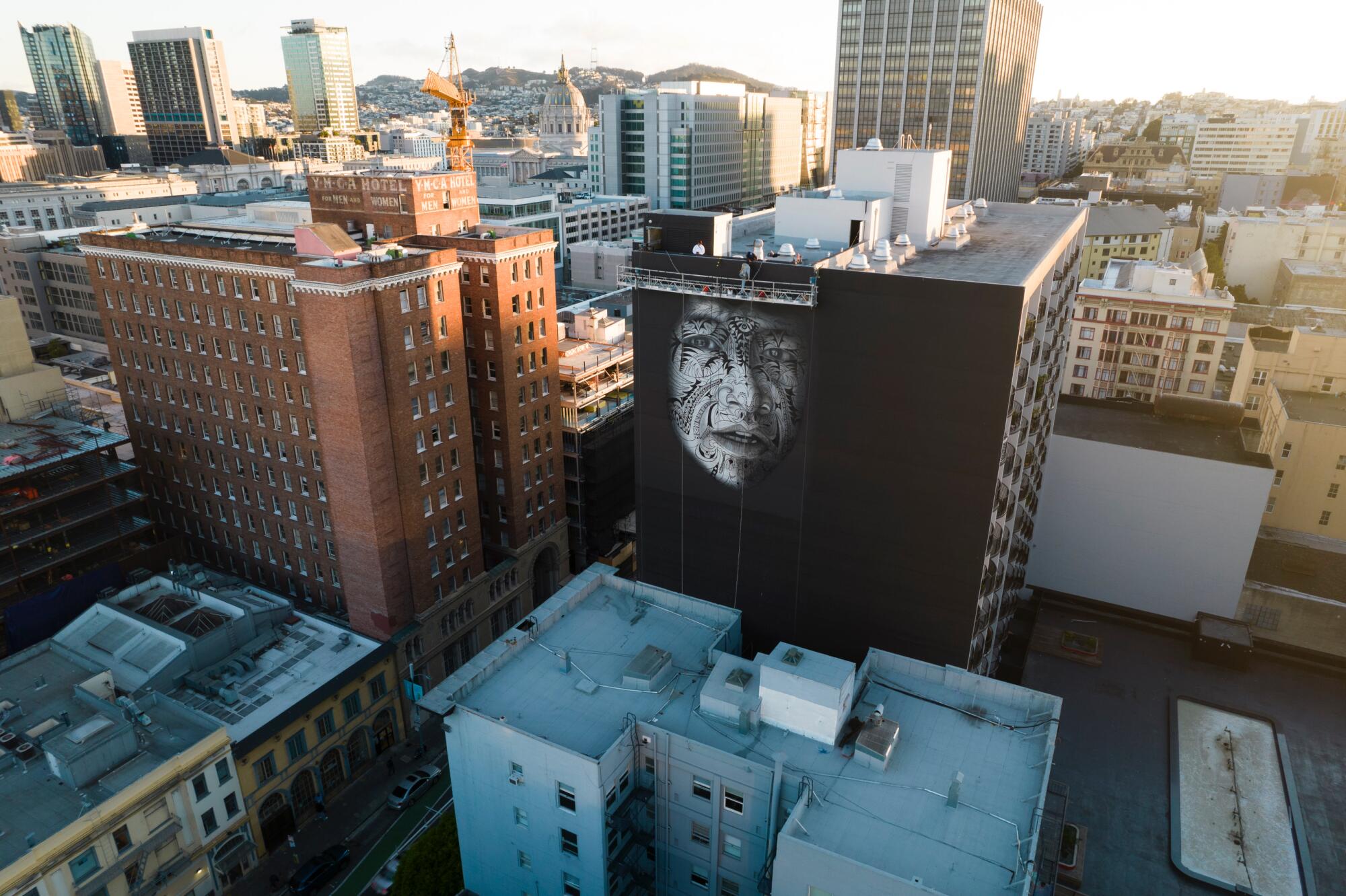
The retrospective offers a welcome dive into Villa’s work. Unfortunately, it is incomplete.
Organized by curators Trisha Lagaso Goldberg and Mark Dean Johnson, the exhibition was intended to mark the 150th anniversary of the San Francisco Art Institute last year. Delayed by the COVID-19 pandemic, the show instead opened at the Newark Museum of Art in New Jersey in February. By the time it made it back to the Bay Area, however, the Art Institute, which for years has been plagued by financial issues, was near collapse. The school announced its closure in July.
The curators, in collaboration with Abby Chen, head of the Asian Art Museum’s contemporary art division, have made heroic efforts to display as much of the show as was feasible given the circumstances. But much is missing.
The glimmers it does offer, however, are tantalizing. Villa is present. If only the art world had been present sooner.
Carlos Villa: Worlds in Collision
Where: Asian Art Museum of San Francisco, 200 Larkin St., San Francisco
When: Through Oct. 24
Info: asianart.org
Carlos Villa: Roots and Reinvention
Where: San Francisco Arts Commission, 401 Van Ness Ave., Ste. 126
When: Through Saturday
Where: sfartscommission.org
More to Read
The biggest entertainment stories
Get our big stories about Hollywood, film, television, music, arts, culture and more right in your inbox as soon as they publish.
You may occasionally receive promotional content from the Los Angeles Times.
